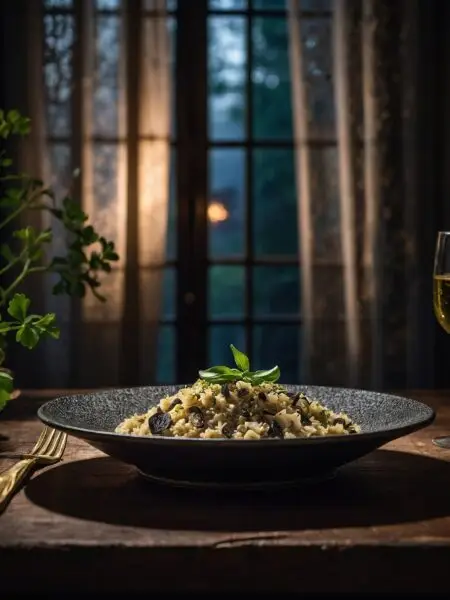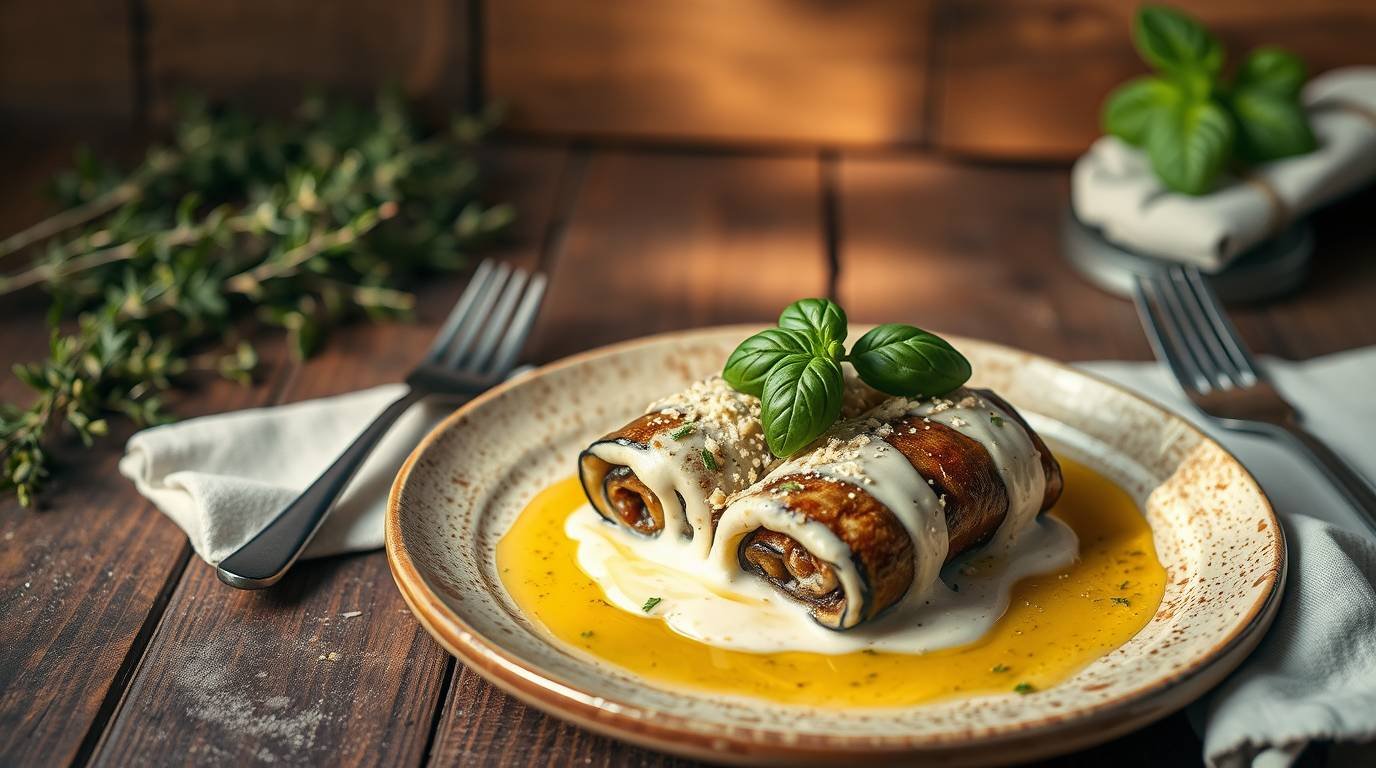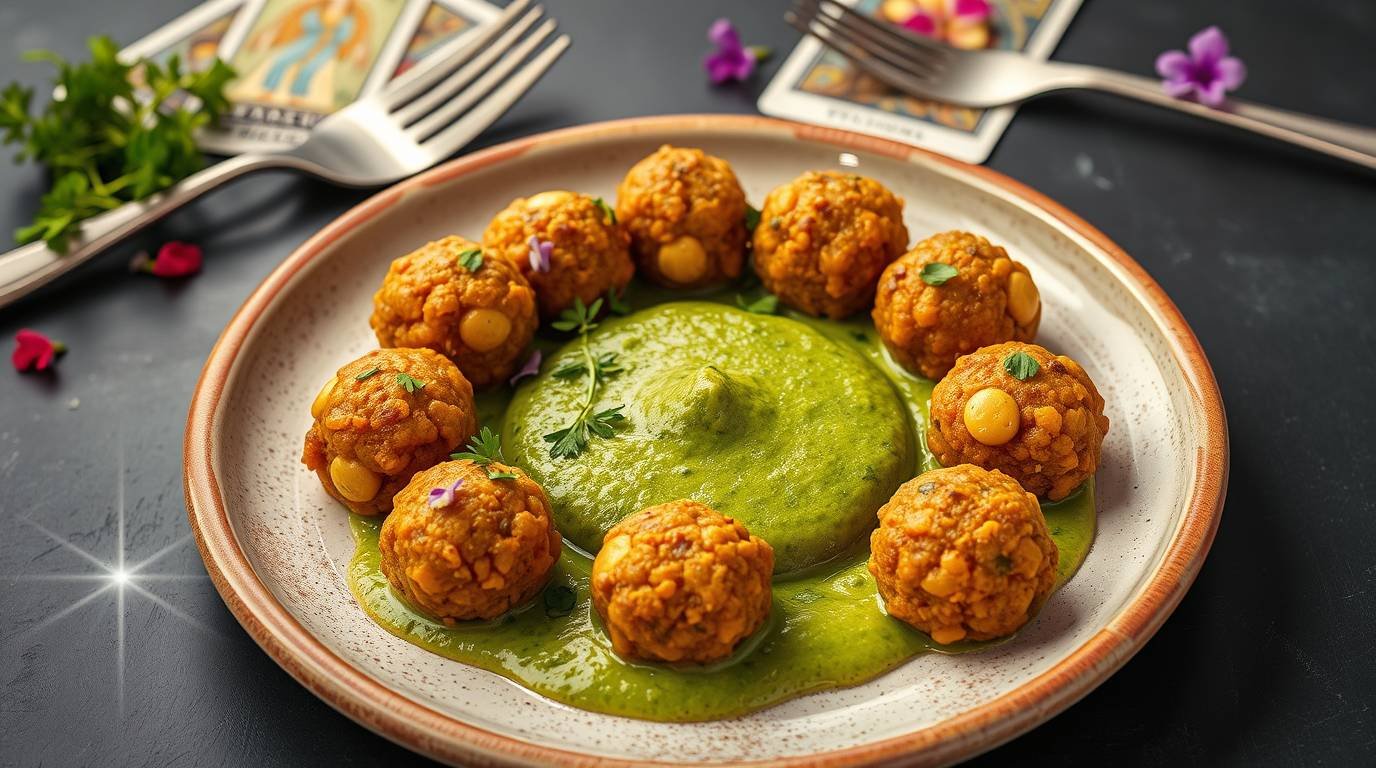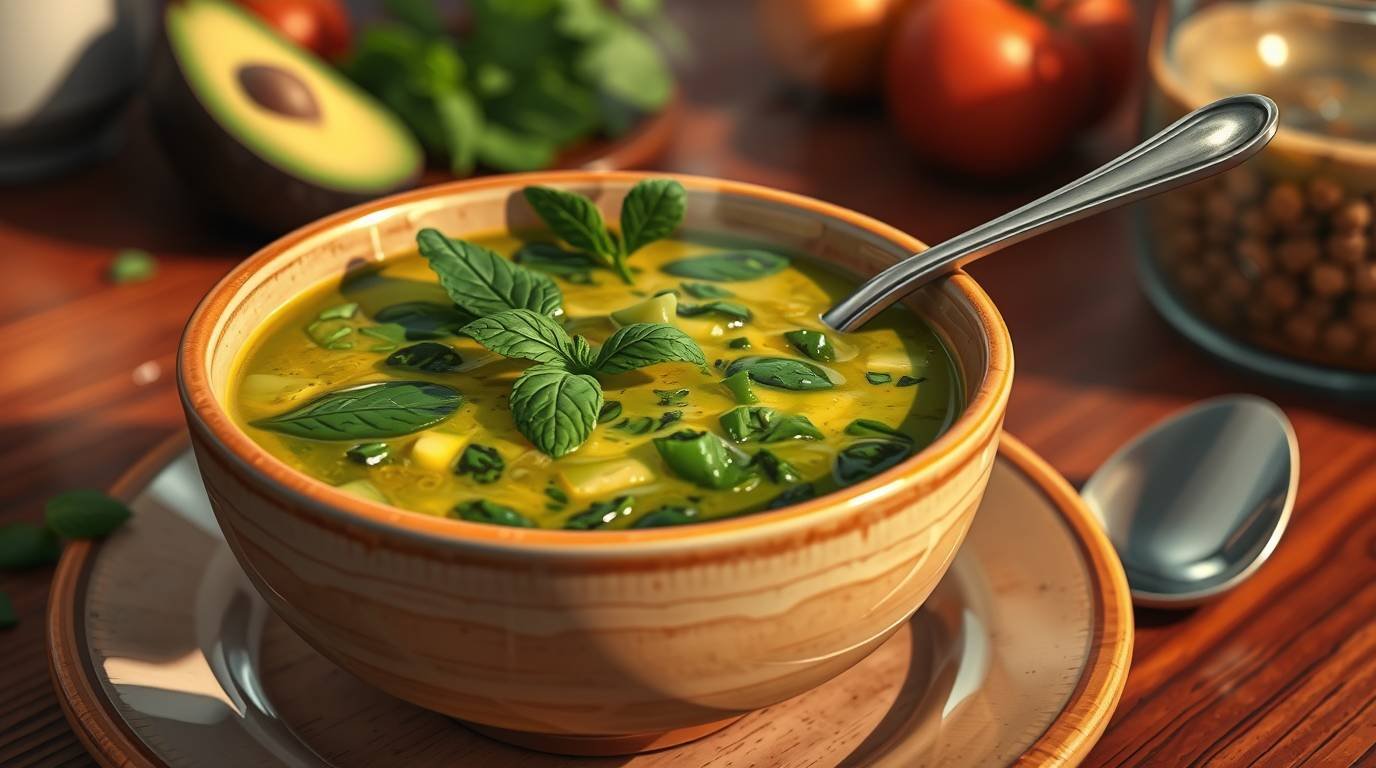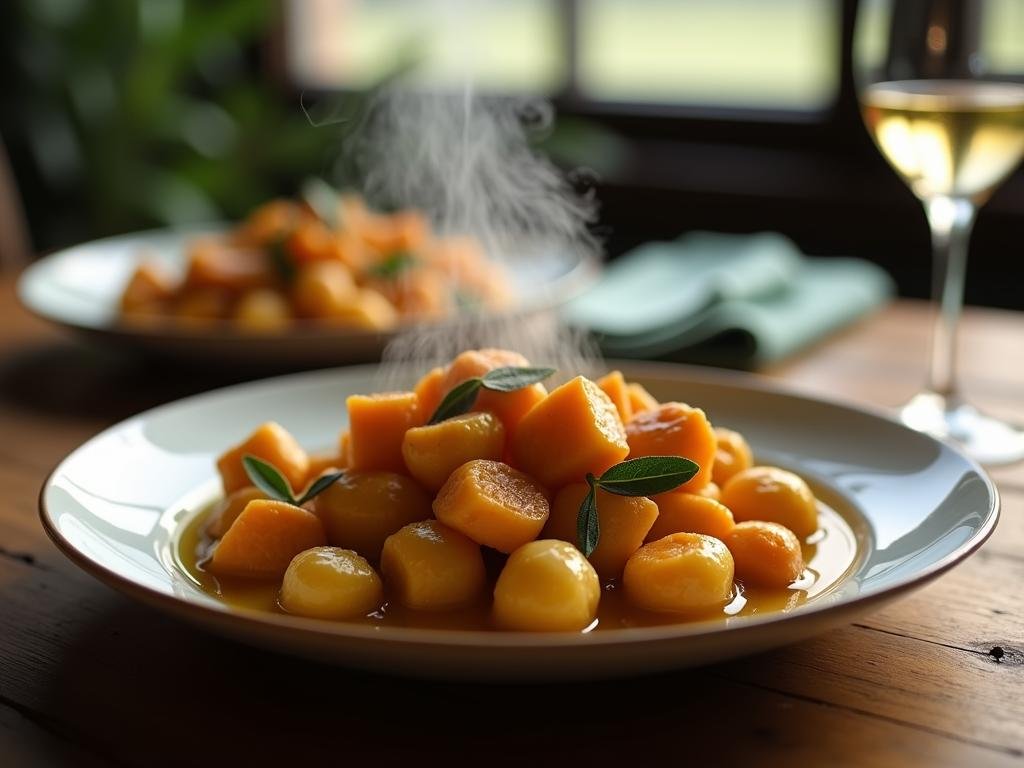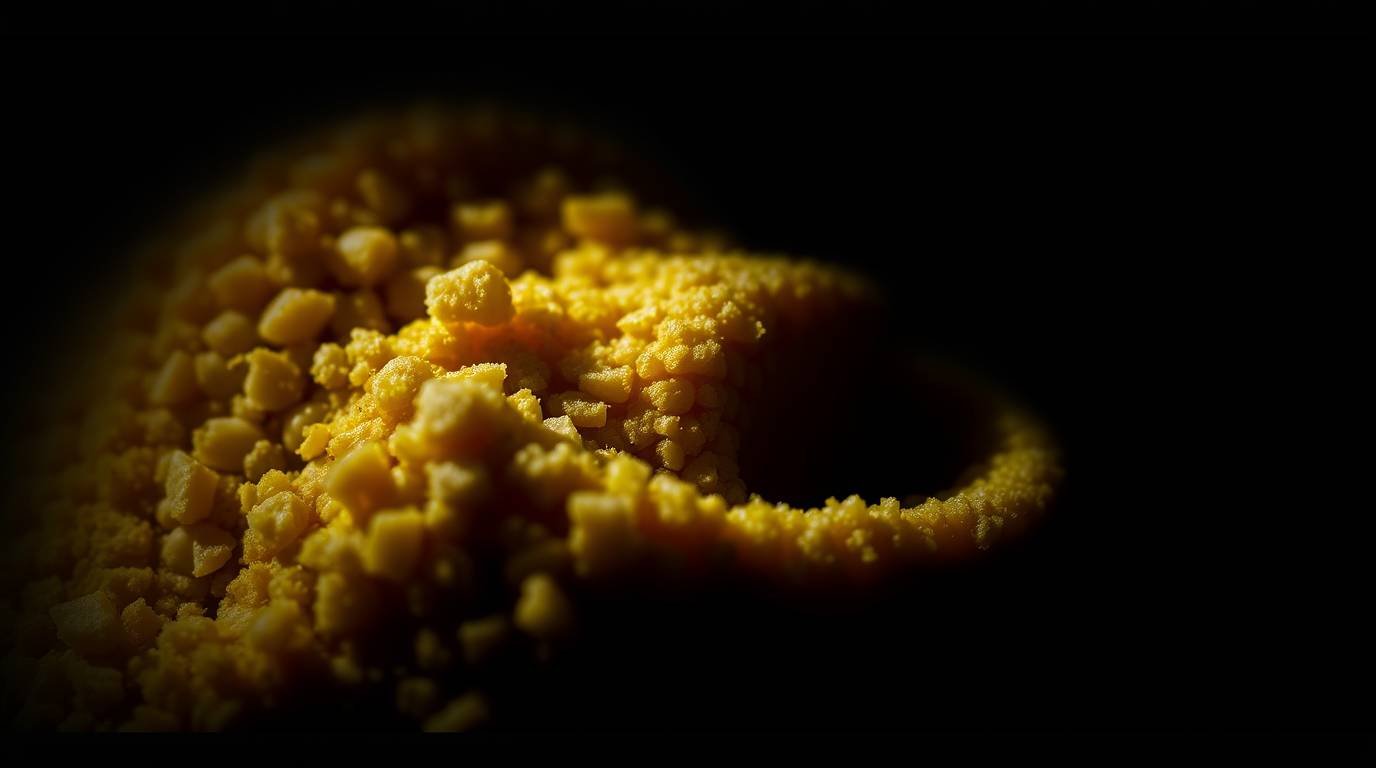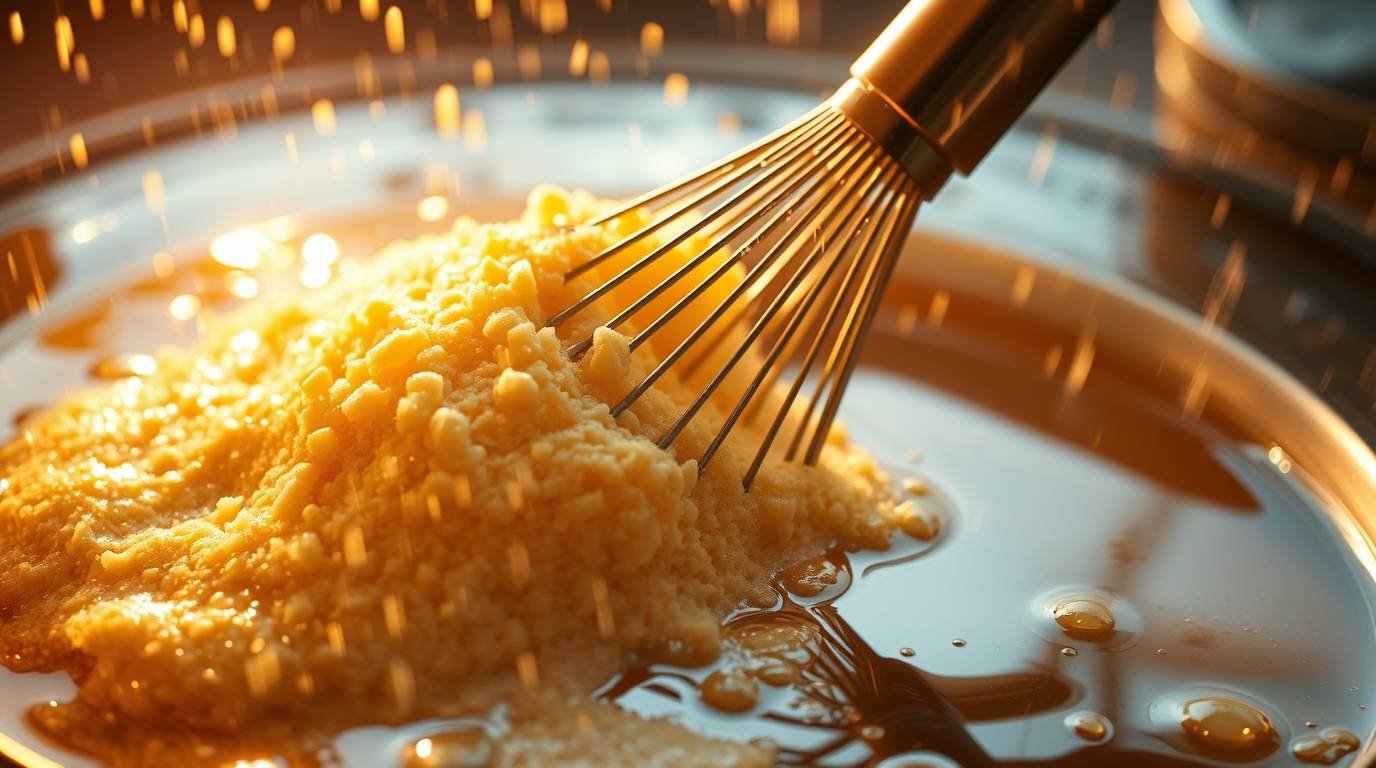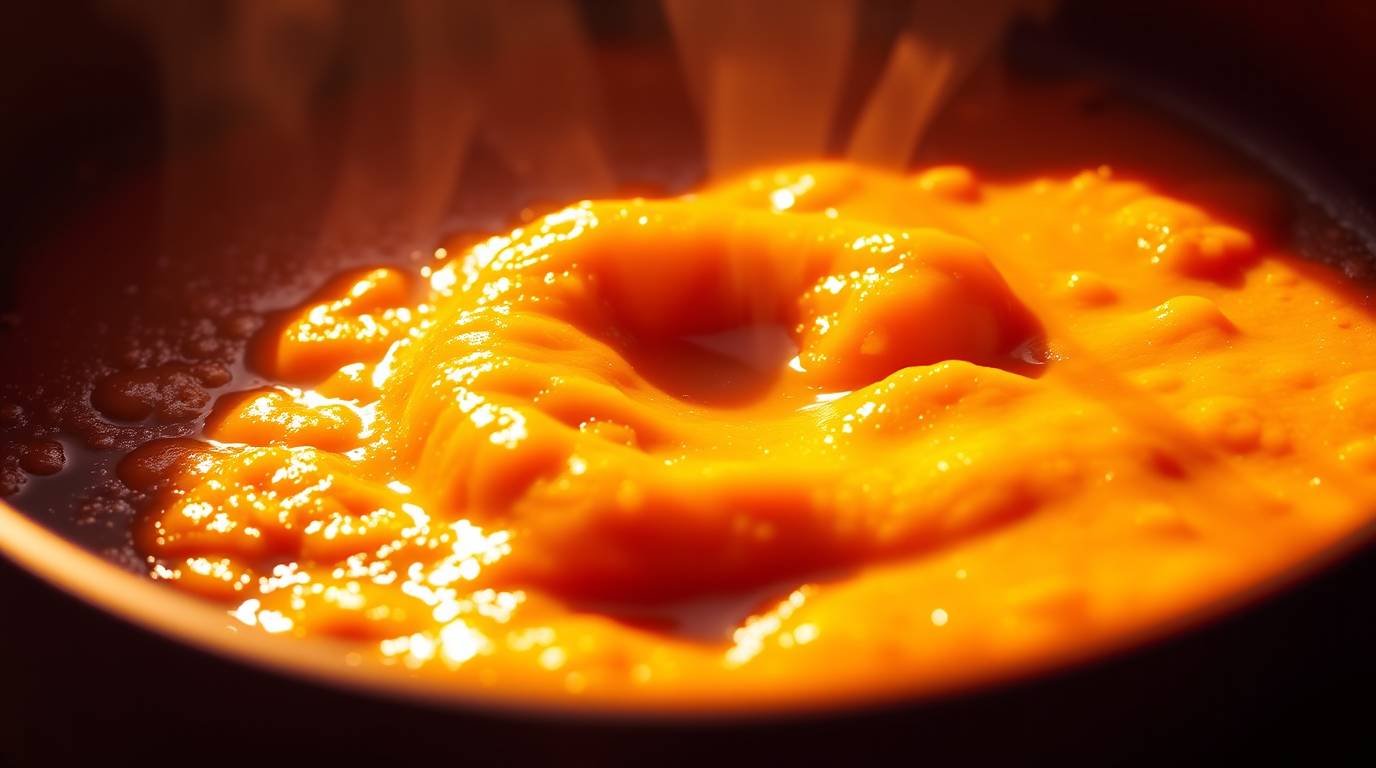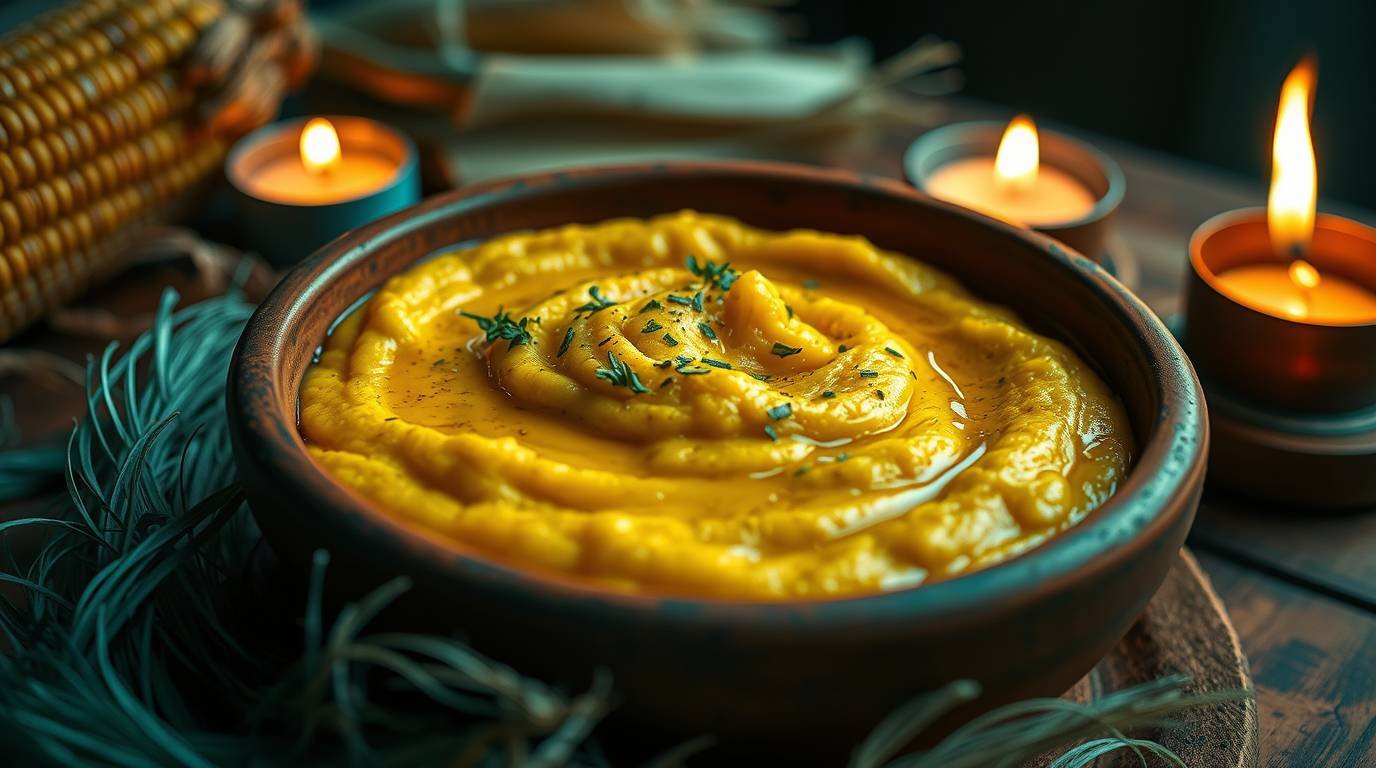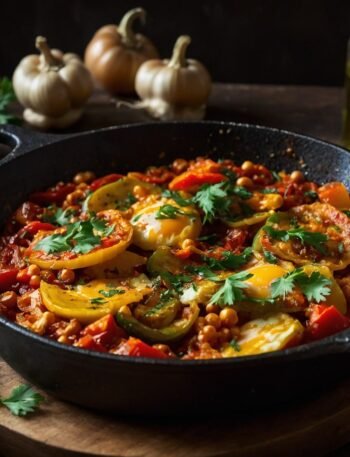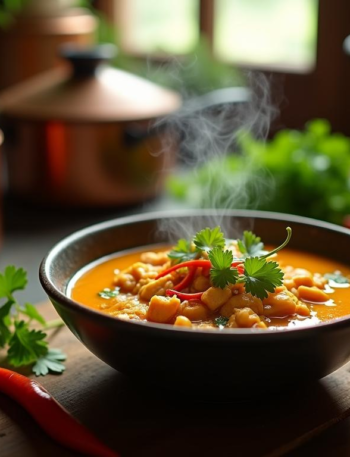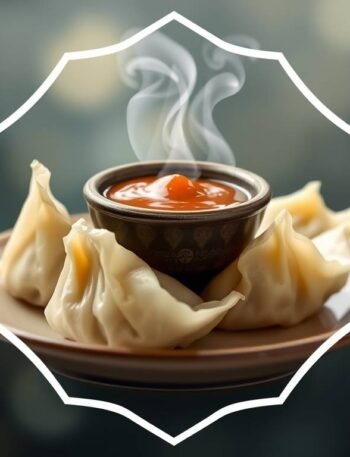Sweet Corn Polenta for Abundance and Comfort – Cibus Fortunae


Blessing: “Abundantia venit cum unoquoque morsu.”
(“Abundance comes with every bite.”)
Sweet corn polenta, lovingly known as Cibus Fortunae, is a dish that embodies the warmth of home cooking and the joy of sharing abundant flavors with loved ones. Imagine a creamy, golden base, rich with the sweet essence of corn, served alongside vibrant vegetables or drizzled with a luscious sauce. This humble yet exquisite dish not only tantalizes the taste buds but also carries with it the promise of prosperity and good fortune, making it a cherished staple in gatherings and celebrations.
Marco’s Notes
“When I first stirred the golden cornmeal into a pot of simmering broth, I felt like I was conjuring sunlight itself. Polenta has that effect — humble ingredients transformed by slow care into something comforting and rich. I’ve always thought of this dish as an offering to Fortuna, the fickle goddess of luck: steadying her with warmth, flavor, and gratitude. Eat this when you need to ground yourself and draw blessings — a bowl of simple, golden power, radiating abundance from the inside out.”
Tarot Insights
-
The Empress – Richness, fertility, nurturing — this card infuses the dish with the energy of growth and plenty.
-
The Wheel of Fortune – Fortuna herself spinning her wheel — polenta as a ritual to turn cycles toward your favor.
-
Ace of Pentacles – A tangible gift of abundance; a reminder that prosperity begins with simple, grounded actions (and meals).
Chakra & Magick Insights
-
Root Chakra (Muladhara): Corn — an earthy, ancestral grain — stabilizes and nourishes your foundation, promoting security.
-
Solar Plexus Chakra (Manipura): The golden color of polenta fuels personal power and confidence — a “you can do this” meal.
-
Magickal Use: Stir clockwise while repeating a haiku invocation:
“Golden grains unfold,
Fortune spins a kindly wheel,
I feast on my luck.”
Eat slowly, visualizing each spoonful filling you with grounded confidence and opportunity.
Origins and Cultural Significance
Polenta has roots deeply embedded in Italian cuisine, tracing back to ancient times when it was a staple for the peasants. Originally made from chestnut flour or farro, it evolved over centuries into the cornmeal dish we know today, particularly after corn was introduced to Europe from the Americas in the 16th century. It became a beloved comfort food, enjoyed by families across various regions, each adding their unique twist to the recipe. In Italy, especially in the northern regions, polenta is more than just food; it represents a culture of togetherness and resilience, often served during communal feasts or family gatherings.
Sweet corn polenta, in particular, transforms this traditional dish into something that celebrates the bountiful harvest. Corn, associated with abundance and fertility in various cultures, makes this dish not just a meal, but also a symbol of good fortune. When prepared with care and shared with friends and family, it holds the power to create lasting memories, much like the stories shared around the dinner table.
Unique Ingredients and Flavors
At the heart of Cibus Fortunae is sweet corn, a vibrant ingredient that brings a natural sweetness and a delightful texture to the dish. The choice of cornmeal is crucial; it’s essential to select high-quality, stone-ground cornmeal for the best flavor and creaminess. The coarse grind of the cornmeal creates a delightful contrast to the smooth, silky polenta, offering a satisfying bite.
Complementing the corn is a medley of ingredients that enhance its natural flavor. For instance, incorporating high-quality vegetable or chicken broth instead of water adds depth and richness. A touch of butter and freshly grated Parmesan cheese elevates the creaminess to new heights, providing that luxurious mouthfeel that makes you want to savor every spoonful. For those seeking a hint of freshness, a sprinkle of herbs like thyme or basil can beautifully balance the dish’s sweetness, creating a delightful harmony on the palate.
Cooking techniques also play a significant role in achieving the perfect polenta. The slow-cooking method is key here, allowing the cornmeal to absorb the liquid gradually and release its starches, which results in that creamy, dreamy texture. Stirring consistently while the polenta cooks not only prevents clumping but also serves as a moment for mindfulness in the kitchen—each stir a reminder of the love and care that goes into crafting a homemade dish.
Personal Connection and Modern Interpretations
For me, Cibus Fortunae is more than just a recipe; it’s a connection to my childhood. I remember standing beside my grandmother as she stirred the polenta, her hands expertly guiding the wooden spoon, teaching me that patience is a virtue in cooking. The warm aroma filling the kitchen during those moments created a sense of comfort that I carry with me to this day.
In modern culinary practices, this dish has been embraced with open arms, allowing for countless interpretations. From serving it as a base for grilled vegetables and meats to transforming it into a decadent dessert by adding cocoa or vanilla, the possibilities are endless. Each variation tells a story, from the kitchen to the table, inviting everyone to explore their creativity while honoring the traditional roots of polenta.
Cibus Fortunae, with its rich history, unique ingredients, and personal significance, is more than just a dish—it’s a celebration of abundance, love, and the joy of cooking. Whether preparing it for a special occasion or a simple family dinner, this sweet corn polenta is sure to bring warmth and happiness to your table, inviting everyone to indulge in its delightful embrace.
Sweet Corn Polenta for Abundance and Comfort – Cibus Fortunae
Description
This delightful sweet corn polenta is a warm, creamy dish that embodies abundance, making it a perfect addition to any meal or celebration, inviting everyone to indulge in its comforting flavors.
Ingredients
Instructions
-
Preparing the Cornmeal
- Choosing the Right Cornmeal
Select high-quality, finely ground sweet cornmeal for the best texture and flavor. Look for organic options if possible.
Using fresh cornmeal enhances the sweetness and results in a creamier polenta
-
- Measuring the Liquid
In a medium saucepan, measure 4 cups of water or vegetable broth for added flavor. Bring it to a gentle boil over medium heat.
If you want a richer taste, consider adding a splash of milk or cream to the broth.
-
Cooking the Polenta
- Whisking in the Cornmeal
Once the liquid is boiling, reduce the heat to low and slowly whisk in the cornmeal to avoid lumps. Keep whisking until well combined.
This step is crucial—whisking continuously prevents clumping and ensures a smooth, creamy texture.
-
- Simmering to Perfection
Allow the polenta to simmer gently, stirring frequently. Cook for about 20-25 minutes until it thickens and pulls away from the sides of the pan.
If it gets too thick, add a little more liquid to reach your desired consistency.
-
Finishing Touches
- Seasoning the Polenta
Once cooked, stir in a generous pinch of salt, freshly cracked black pepper, and a tablespoon of butter for creaminess.
Feel free to add herbs like thyme or rosemary for a flavorful twist.
Nutrition Facts
Serving Size 4
- Amount Per Serving
- Calories 2147.29kcal
- % Daily Value *
- Total Fat 118.57g183%
- Saturated Fat 62.92g315%
- Cholesterol 283.92mg95%
- Sodium 6045.87mg252%
- Potassium 1426.5mg41%
- Total Carbohydrate 235.52g79%
- Dietary Fiber 25.07g101%
- Sugars 33.63g
- Protein 61.05g123%
- Vitamin A 5847.65 IU
- Vitamin C 21.16 mg
- Calcium 1276.24 mg
- Iron 14.32 mg
- Vitamin D 5.07 mcg
- Vitamin E 5.2 mg
- Vitamin K 86.86 mcg
- Thiamin 1.74 mg
- Riboflavin 2.48 mg
- Niacin 13.08 mg
- Vitamin B6 7.88 mg
- Folate 899.32 mcg
- Vitamin B12 13.24 mcg
- Pantothenic Acid 2.75 mg
- Phosphorus 1629.86 mg
- Magnesium 348.97 mg
- Zinc 13.71 mg
- Selenium 74.45 mcg
- Copper 1.05 mg
- Manganese 5.19 mg
* Percent Daily Values are based on a 2,000 calorie diet. Your daily value may be higher or lower depending on your calorie needs.
Note
- For a creamier texture, consider stirring in a bit of heavy cream or butter once the polenta is fully cooked.
- Use freshly grated Parmesan cheese for enhanced flavor; it melts beautifully into the polenta.
- If you're looking for a bit of sweetness, add a drizzle of honey or maple syrup during the cooking process.
- Experiment with herbs like thyme or rosemary; they can elevate the dish and add aromatic depth.
- If you prefer a more robust flavor, toast the cornmeal in a dry pan for a few minutes before cooking it in water.
- For a vegan alternative, use vegetable broth instead of water and omit any dairy.
- To make individual servings, pour the cooked polenta into a greased baking dish, let it cool, and cut it into squares or shapes after it sets.
- This dish pairs beautifully with sautéed mushrooms, roasted vegetables, or a fresh tomato sauce.
- Store leftover polenta in an airtight container in the refrigerator for up to three days; reheat with a splash of water or broth to restore creaminess.
- For a gluten-free option, ensure that all ingredients, especially any added spices or sauces, are certified gluten-free.
A Celebration of Flavors
Cibus Fortunae, or Sweet Corn Polenta, is not just a dish; it’s a warm embrace on a plate. The creamy texture, combined with the natural sweetness of corn, creates a symphony of flavors that dance on your palate. Each bite feels like a celebration of abundance, awakening your senses and bringing comfort to your soul. It’s the kind of dish that invites laughter and storytelling around the table, where memories are made and shared.
Memorable Moments
I recall the first time I made this dish for a gathering with friends. As I stirred the pot, the aroma filled the kitchen, drawing everyone in like a siren’s call. We laughed, reminisced, and enjoyed each other’s company, all while savoring the delicious polenta. That moment cemented it as a family favorite, a go-to recipe that brings everyone together, no matter the occasion.
Serving Suggestions and Leftover Tips
Serve it as a cozy side dish alongside roasted vegetables or grilled meats, or top it with sautéed mushrooms and herbs for a hearty main course. If you have leftovers (which is rare!), store them in an airtight container in the fridge for up to three days. Reheat gently, adding a splash of broth or water to bring back its creamy consistency.
Join the Community
I encourage you to try your hand at this recipe and let it spark your creativity. Feel free to experiment with different toppings or spices that resonate with you. I’d love to hear about your experiences—what variations did you try? How did your loved ones react? Your feedback and stories are what make this vibrant cooking community thrive, so don’t hesitate to share!
Tag tarot_mistical_lab/ if you made this recipe.
Frequently Asked Questions
Q: How can I store the leftovers?
A: Leftovers can be stored in an airtight container in the fridge for up to 4 days. Reheat gently on the stovetop or in the microwave, adding a splash of water or broth to restore creaminess.
Q: Can I substitute an ingredient?
A: Absolutely! You can swap out the sweet corn for other grains like quinoa or even use vegetable broth instead of water for added flavor.
Q: What should I serve this with?
A: Cibus Fortunae pairs wonderfully with grilled veggies, a fresh salad, or as a base for sautéed mushrooms or braised greens.
Q: Is this recipe gluten-free?
A: Yes, this sweet corn polenta is naturally gluten-free, making it an excellent option for those with gluten sensitivities.
Q: Can I make this recipe vegan?
A: Yes, just ensure that any broth used is vegetable-based, and you can skip any dairy additions for a fully vegan dish.
Hello, beautiful people! I am Marco DeLuca, Mystic Chef.
Master Chef • Tarot Grandmaster • Rune Caster
Crafting recipes that blend magick, flavor, and soul.
You may also like...


Charred Red Cabbage Wedges with Za’atar Tahini: A Ritual of Renewal & Fire
